Reframing Potty Training: How we can let go to speed up the process
The other day my partner went to work and about four hours into his day realized he had poop on his shirt. This is life as a parent: poop and pee is not disgusting. We find it on our hands, our clothes, and hair. We even touch things that might be poop and smell it to make sure. We think a lot about our children’s pee and poop. I remember that first week of his life being obsessed with how much and when. With this same fervor, I entered the world of potty training.
Here are some of the big lessons I learned through the process, most importantly to stop trying to control the situation and instead…
Let go of the outcome. Teach small steps and have faith that your kiddo will get there.
We decided to potty train at 22 months thanks to the book, “Oh Crap! Potty Training” by Jamie Glowacki and we made a plan to start when we could take 4 straight days for training. I highly recommend her book. Not only does it align with Positive Discipline, but the woman has helped to potty train thousands of kids. I don’t know the exact number, but that is way more than any parent I know.
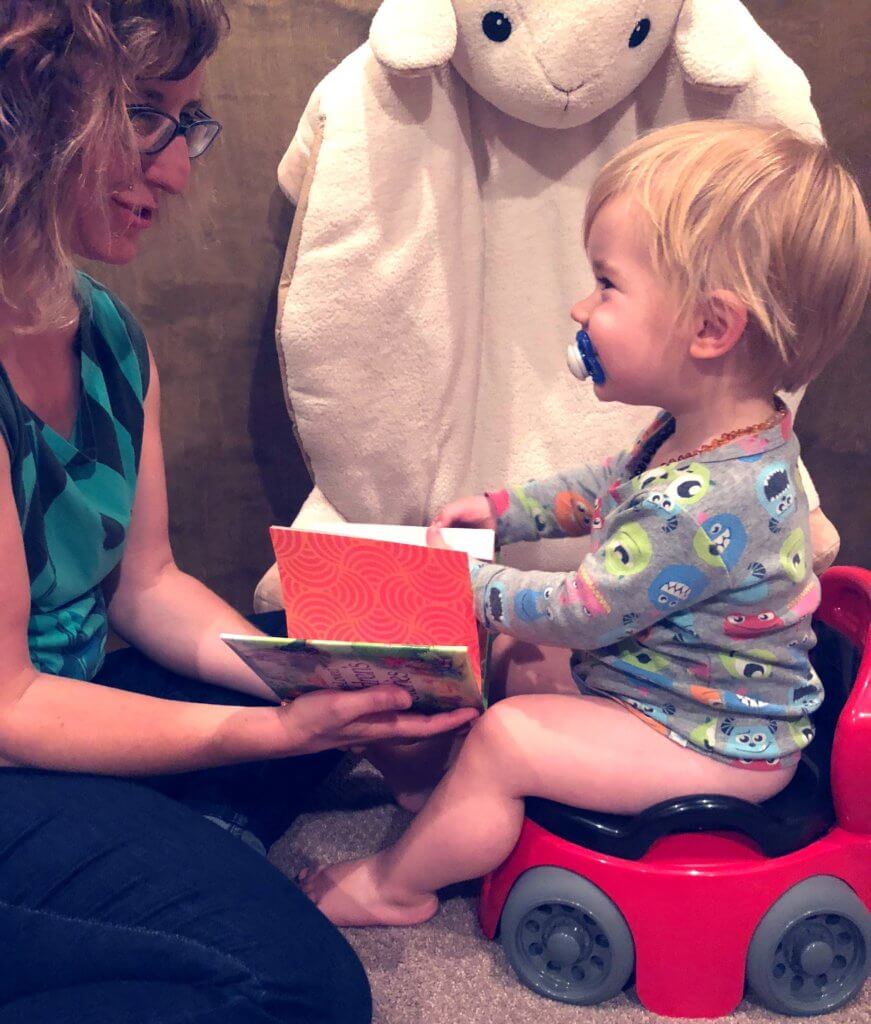
According to Oh Crap! Potty Training, the best time to potty train is between 20-30 months, “and before twenty months is unbelievably easier than after thirty months”. This makes sense to me from a developmental perspective. Children around the age of three have a strong will and are also highly independent. Their right brain development is peaking, which means big emotions regardless of rationale. (Hence the meltdown if you cut their sandwich in half.) Attempting to convince an independent, highly emotional three year old that they now need to use a toilet is sure way to invite power struggles, especially if it’s you who decided it’s time and not them.
Needless to say, there are many reasons to wait until later and there’s nothing wrong with that. It WILL happen, so decide when is the right time for your family. You can be guaranteed they will not be wearing diapers at their high school graduation. Whenever you choose, here are some tips to help you both feel successful in this new practice.
Make a plan and stick to it
It takes roughly three days (that’s it!) for most kids to get a handle on potty training, especially if you pull all diapers even at night time. This does not mean they have mastered the new skill. It just means that they will be able to recognize that they need to pee (most of the time) and often let you know so you can go to the bathroom. They will also be able to hold it overnight (again, most of the time).
We began without pants or diapers, day or night, for the first 4 days at home. By day 2, our little one was telling us when he needed to pee. He made it to the toilet sometimes. By day 3, we were consistently making it to the toilet with only a few small accidents – just dribbles. Miraculously, we had no accidents the first night, then just two accidents the second night, and not a single nighttime accident for another 8 days. We kept an extra sheet close by and had a fleece blanket we could lay down in case we were too tired to change the sheets. Yep, you can just lay that blanket down on top and do the rest in the morning.
The point here is to not give up. Make a plan for how you want to tackle the process and stick to it for at least 3 full days. If after 3 days something isn’t working for you, change it up. The important thing here is consistency and communication. Be consistent with the process for your kiddo. Communicate when things need to change. They are so flexible with change, often more flexible than we are as adults.
Don’t ask your child if they need to use the bathroom
They will say no. Unless you are okay with them saying no, don’t ask. Just say, “it’s time to use the bathroom.” Then give a limited choice. “Which bathroom do you want to use, the upstairs or downstairs?” Or “the potty or the big toilet? You decide.” Even better, add it to the routine. Our routine included using the toilet before the bath, after waking from sleep, before meals, and before leaving the house. I would say, “you don’t have to pee but we always sit on the toilet after nap.” Then, he would of course pee… everytime.
Consistency is key here. It also helps how you say it. By saying this with connection (by tone of voice, or making it fun or silly) and firmness (this is what we are doing) we show that mutual respect and stick to what we say we are going to do, which helps them to feel safe because it’s predictable. Research shows that children from families in which daily life is predictable do better at school and have more self-control. This self-control leads to resiliency.
Use connection when poop becomes an issue
It is completely normal for your little one to have a fear of pooping. This can be difficult for kids if they feel any pressure or are anxious at all. The sphincter literally will not relax, making it impossible. Sometimes it’s a fear of pooping on the toilet, or sometimes it’s the poop itself.
Try using connection to help them overcome their poop fears. First, validate their feelings. “You are scared to go poop on the toilet.” This actually tells the brain to calm down. Next, offer to bring their favorite book to the bathroom or a stuffy that provides comfort. Have the stuffy poop on the potty while they poop on the toilet. Sing songs! Try making a magic poop spray that can spray before using the toilet. We did this with water and lavender essential oil and it smelled great. Modeling here can also be powerful depending on your comfort level.
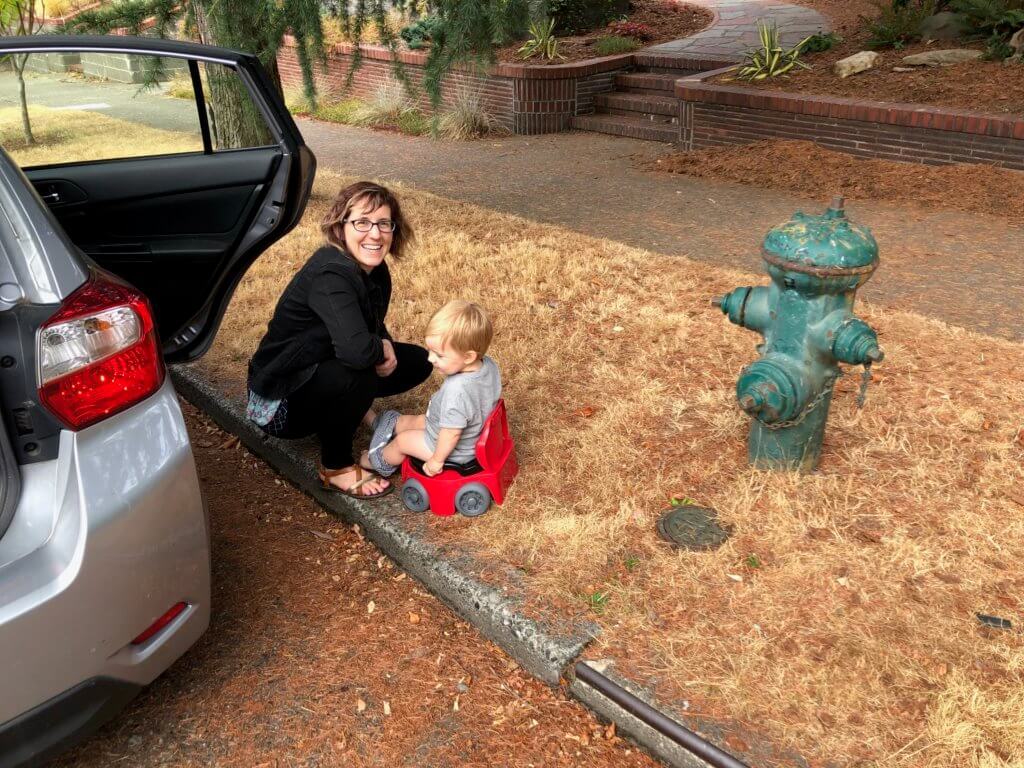
Teach small steps to gain independence
Think about what part of the potty training routine they can do on their own now. What do they still need to learn? How can you start small and eventually teach them all the steps to do it on their own? How can they push their own pants down and pull them up again? If you are using a potty, can they help you dump it in the toilet? Can they use a stool to wash their own hands?
Let go of your own ideas of what success looks like
Relax. Potty training is not about perfection. In fact, it takes time to train those muscles to hold in the pee. They need to practice and strengthen. Accidents will happen and there could many reasons why they occur. Instead of focusing on what is going wrong, celebrate the small successes along the way! “You did it!” “I noticed that you listened to your body and told me you needed to pee. We made it all the way to the toilet!”
Show your child that you have faith that they will get there. “Accidents are okay in our house. I know you’ll pee in the toilet when you are ready.” Think of it like riding a bike. You don’t expect to put your child on a bike show them how to balance and pedal and then expect them to do it perfectly every time after that, right? They need practice, modeling, teaching and your patience.
I hear from a lot of parents that they are worried, nervous or don’t believe their child is ready. I’m telling you that your child is ready between 20-30 months. You might not be ready, and that is OK too. Instead of putting it on them, take responsibility for your own feelings around potty training. When it’s time, you can tell them you believe in them. You know they can do it. It just takes practice.
Practice. Practice. Practice.
“You will be amazed at how quickly time passes when you detach emotionally from the potty-training issue. Your detachment will eliminate power struggles and may actually speed up the process.”
~Positive Discipline for Preschoolers
It’s now been 5 months since we started the potty training process. We still have accidents some days when we he’s so focused on playing, or I forget one of our bathroom stops during our normal routine. I still consider potty training a success. Accidents will still happen for a while and that’s okay. We learn each time. What can we do differently next time? What skill is missing here? What mutually respectful solution can we find together to overcome this challenge?
I’ve found it helpful to have many tools at my disposal when it comes to toileting. Here are a few other gems, I’ve been using consistently. What are your ideas? Please add them to the comments below.
- Put your plastic potty in the back of the car while they are still learning. This gives you more options for toilets when you are on the road.
- You can purchase a travel toilet like this. It’s good for putting little ones on big public toilets when they are afraid of them, and they can use it to pee on the ground while avoiding getting it all over their pants.
- Always offer limited choices and try to make it fun. “Which toilet do you want to use? This one or this one?” “What book/toy do you want to bring to the bathroom with you? The car or stuffy?” “Do you want to fly like airplanes to the bathroom or swing like monkeys?”
- Imagine you are learning something new right now. What would help you to learn? Is it helpful to have someone being pushy and controlling and constantly on your case? No. What is helpful? Teaching small steps, compassion, patience and faith you will get there.


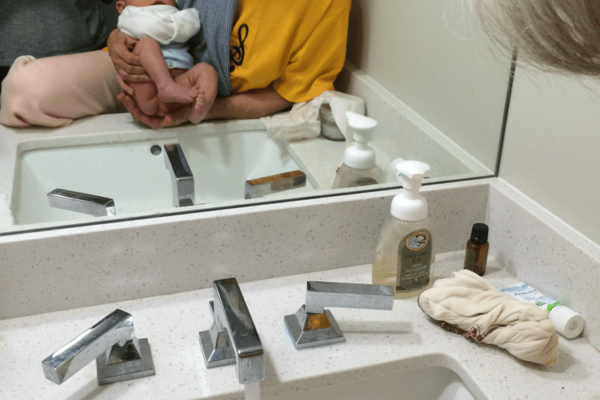
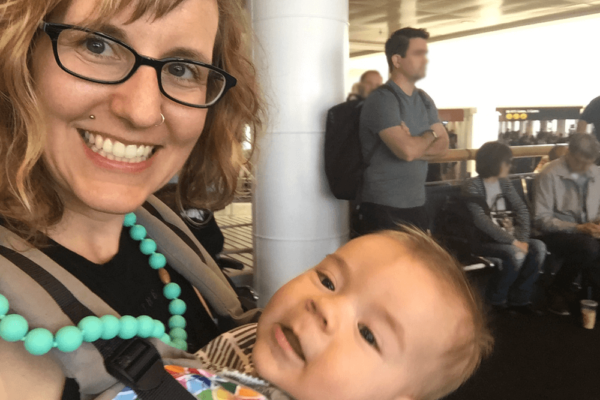
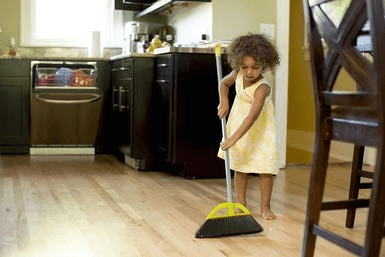
Comments